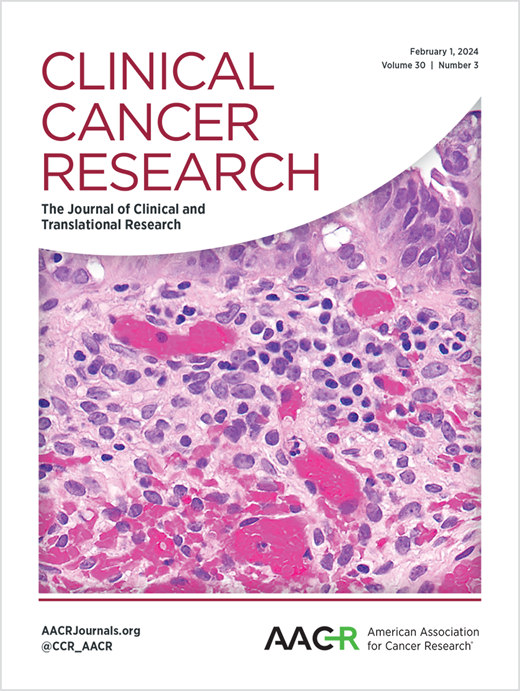现在是时候拒绝将 RECIST 作为罕见肿瘤试验的主要终点了吗?
IF 10
1区 医学
Q1 ONCOLOGY
引用次数: 0
摘要
上皮样血管内皮细胞瘤(EHE)是一种由 YAP-CAMTA1 融合驱动的超罕见癌症。基于该融合与 MEK 通路之间的联系,SARC33 试验应运而生。这是一项检查曲美替尼的 2 期试验,该试验未达到 RECIST 的主要目标,但患者报告的结果显示疼痛有所改善。本文章由计算机程序翻译,如有差异,请以英文原文为准。
Is It Time to Resist Using RECIST as a Primary Endpoint for Rare Tumor Trials?
Epithelioid hemangioendothelioma is an ultra-rare cancer driven by YAP-CAMTA1 fusion. Based on the link of the fusion to the MEK pathway, SARC33 was performed. It is a phase 2 trial examining trametinib that missed its primary objective by RECIST but demonstrated patient-reported outcome benefits in improved pain. See related article by Schuetze et al., p. 4584.
求助全文
通过发布文献求助,成功后即可免费获取论文全文。
去求助
来源期刊

Clinical Cancer Research
医学-肿瘤学
CiteScore
20.10
自引率
1.70%
发文量
1207
审稿时长
2.1 months
期刊介绍:
Clinical Cancer Research is a journal focusing on groundbreaking research in cancer, specifically in the areas where the laboratory and the clinic intersect. Our primary interest lies in clinical trials that investigate novel treatments, accompanied by research on pharmacology, molecular alterations, and biomarkers that can predict response or resistance to these treatments. Furthermore, we prioritize laboratory and animal studies that explore new drugs and targeted agents with the potential to advance to clinical trials. We also encourage research on targetable mechanisms of cancer development, progression, and metastasis.
 求助内容:
求助内容: 应助结果提醒方式:
应助结果提醒方式:


